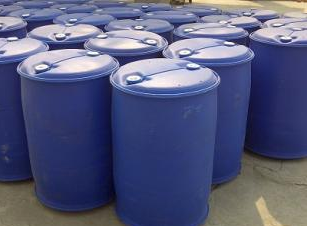The performance of sound-absorbing materials is significantly improved when silica sol is added
#Industry News ·2025-08-21 18:01:36
With the depletion of petroleum resources, the development of traditional petroleum-based sound-absorbing materials (such as polyurethane foam and polystyrene foam) has gradually been restricted. Therefore, the development of green sound-absorbing materials is particularly important. Plant fiber is a kind of natural and biodegradable biomass material, which is widely present in plants in nature and has abundant reserves. Rational utilization of such resources can reduce human beings' reliance on non-renewable raw materials such as oil.
Made from plant fibers, it has advantages such as degradability and reproducibility, and has broad application prospects to replace traditional petroleum-based sound-absorbing materials. However, due to the relatively fluffy structure and raw material characteristics of plant fiber foam materials, as well as their poor mechanical properties and flame retardancy, their development has been restricted.
By modifying sound-absorbing fibers with silica sol and through foam molding technology, lightweight, high-strength and heat-resistant silica sol and plant fiber sound-absorbing materials can be quickly prepared. The addition amount of sol has different effects on the density, mechanical properties, thermal stability and sound absorption performance of the material.

Silica sol deposits on the surface of plant fibers to form an inorganic film, which can effectively delay heat transfer, prolong the final decomposition temperature, and improve the thermal stability of silica sol-plant fiber sound-absorbing materials. Compared with non-silica sol, the volume of silica sol-plant fiber sound-absorbing material is reduced, the internal density is improved, and the elastic modulus and yield strength are significantly enhanced. However, with the increase of silica sol, the density of the sound-absorbing material significantly increases. An excessively high addition of silica sol is not conducive to the lightweighting of the sound-absorbing material.
The sound absorption effect of materials without silica sol is poor. With the increase of silica sol dosage, the sound absorption performance of the material first increases and then decreases. This is because the main way for sound waves is through diffraction into the interior of the sound-absorbing material. When the internal porosity is too high, the flow resistance of the sound-absorbing material is small, and the sound waves entering the sound-absorbing material cannot be repeatedly attenuated inside, eventually resulting in poor sound absorption effect of the sound-absorbing material. When the porosity in sound-absorbing materials is too low, sound waves are more likely to be reflected when they reach the material surface and cannot enter the interior of the sound-absorbing material, thereby reducing the sound absorption performance of the sound-absorbing material. The addition of silica sol reduces the porosity of the sound-absorbing material, gradually making its interior denser. Considering the lightweight application of sound-absorbing materials, the density of sound-absorbing materials should not be too high. By optimizing the addition amount of silica sol, an optimal balance between pore structure and sound absorption performance can be achieved.





